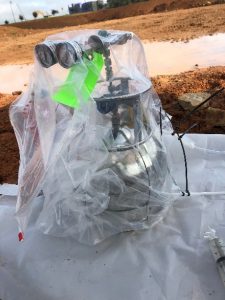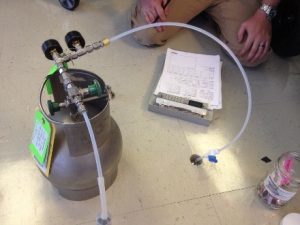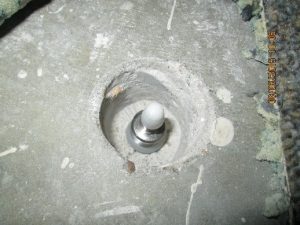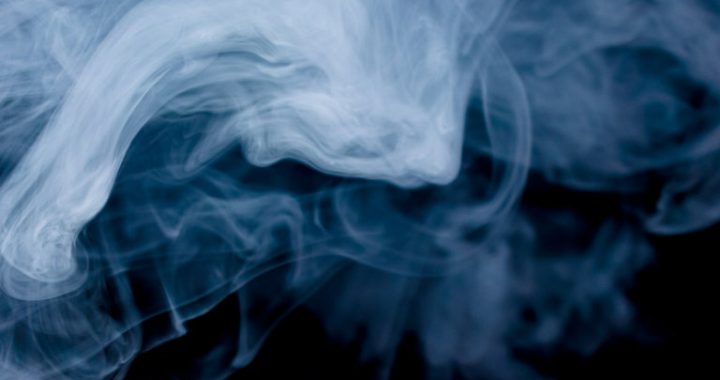-
(Part 2 of a 3-Part Series)
As we learned in Part 1, vapor intrusion (VI) is the migration of chemical vapors into a building from its subsurface (beneath its foundation). The vapors may originate from contamination within soil, groundwater, or other sources (for example, petroleum free product around a nearby underground storage tank). Identification of potential risks early in a project’s development will allow the appropriate level of VI investigation/mitigation to be integrated into the process.
What’s the process for sampling for potential VI? Here’s a brief overview.
Qualitative Assessment – The Starting Point
The starting point for preliminary screening is usually groundwater data, which may be part of existing historical datasets or may be collected as part of a Phase II ESA. A review of existing historical geological, groundwater, soil, and residual source data, such as available geological, hydrogeological, and historical environmental information, and comparison to screening criteria is considered a qualitative assessment. Most states do not assess soil data quantitatively (see below) because of the significant variability in vapor generation and migration from site to site. Petroleum sources require considering and evaluating the unique degradation and transport characteristics which have been documented for those types of releases.
Quantitative Sampling — Active Soil Gas Data Collection

Active soil gas monitoring location in open field, with quality control (helium shroud) and evacuated canister shown.
If qualitative data and/or groundwater data suggest the potential for VI, quantitative sampling, which includes collecting groundwater, active soil gas and/or passive indoor air data, is the next step in the VI assessment process. This article discusses active soil gas sampling (collection and analysis of vapor samples), as opposed to passive soil gas sampling techniques. Contact EnSafe for more information about their applications to VI sites.
Here are some overview facts about active soil gas sampling to collect materials that may contain vapors:
- “Near slab” is collected adjacent to a building.
- “Soil gas” is collected from an open field.
- Near slab and other soil gas samples are typically collected several feet below ground surface.
- “Sub-slab” is collected through a small-diameter hole drilled through the building’s foundation to access sand, gravel, or other structural fill materials
- Both near slab/soil gas and sub-slab points may be installed as temporary or permanent locations.
- Samples are typically collected using 1-liter or 6-liter, stainless-steel evacuated canisters with an inlet port connected to the sample point using small-diameter tubing. The vacuum in these canisters, when opened, pulls vapors from the subsurface and, once closed, remains under vacuum until processing by the laboratory.
- Inside a building, the locations of sub-slab samples are biased toward suspected sources based on historical operations.
Quantitative Sampling – Active Indoor Air Data Collection

Sub-slab sample location through temporary, small-diameter location in tile floor. Sampling apparatus (evacuated canister and tubing) shown.
Indoor air samples are collected using 6-liter, stainless-steel evacuated canisters. The inlet port on these canisters is connected to tubing set within the breathing zone of the average building occupant (usually three to five feet above the floor). As with the soil gas samples, when opened, the vacuum in the canisters draws in indoor air with a flow regulator over an 8-hour period (for a commercial/industrial workspace) or a 24-hour period (for a residential structure). The locations of indoor samples are biased toward occupied spaces and may be paired with a sub-slab location.
While samplers are in the field, additional qualitative and quantitative data may also be collected, including building layouts, heating and air conditioning operations information, chemical usage/inventories, building construction information, background air concentration samples, and ambient (outdoor) air samples.

Permanent sub-slab soil gas location (grouted into 3-inch diameter core hole), to be covered by metal plate. Sampling location will be concealed beneath carpeting.
Data Screening – The Last Step in Determining the Potential for VI
Following groundwater, soil gas (whether near slab or sub-slab), and indoor air data collection, the data are then compared to U.S. EPA Vapor Intrusion Screening Levels (VISLs) — a standardized set of criteria that can be calculated based on human health-based risk criteria. State-specific criteria may also apply, as states may calculate their own criteria, or they may establish specific risk parameters for use with U.S. EPA VISLs.
Data evaluation is performed considering a hierarchy of reliability:
- Groundwater data exceedances, which are considered preliminary screening data, usually trigger additional vapor sampling activities.
- Near slab/sub-slab soil gas exceedances indicate the potential for VI; they do not indicate VI is occurring at the time of sampling. However, state agencies may consider future potential (i.e., if changes in building construction or operation occur) as justification for mitigation actions.
- Indoor air exceedances indicate VI may be occurring onsite. Other supporting, weight-of-evidence data (e.g., background and ambient air data) should be evaluated; however, indoor air exceedances typically warrant mitigation actions.
In addition to chemical-specific comparisons, data may also be evaluated in terms of carcinogenic risk and non-cancer hazard, to assess the holistic risk to building occupants. Both U.S. EPA and various state agencies use risk and hazard ranges to assess the potential for VI at a site; however, each agency establishes thresholds for response actions. Consequently, review of results and discussion of potential recommendations and risk management options is critical to VI management at each site.
Results and Recommendations
Once investigation results are compiled and screened, the potential for risk at an individual site is documented in accordance with regulatory guidelines and/or client risk management tolerances:
- No risk
- Risk that can be monitored over the long term
- Risk that can be monitored or mitigated, depending on the client’s preference
- Risk that must be mitigated, based on regulatory guidance
Once categorized, the path forward, including VI mitigation options, can be discussed and managed appropriately.
This is the second of a three-part series on VI. Part 1 discussed VI and how it relates to property assessments. Part 3 will discuss VI mitigation options.
